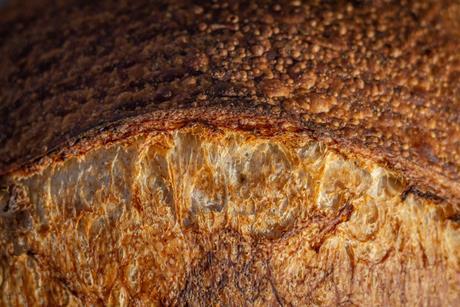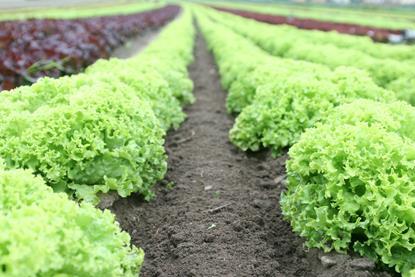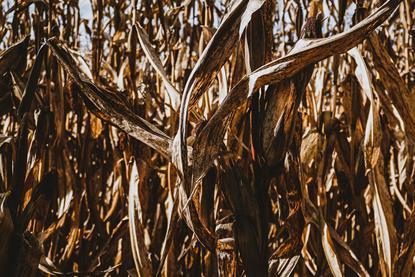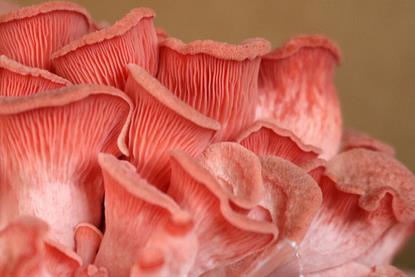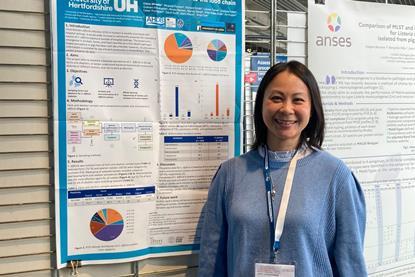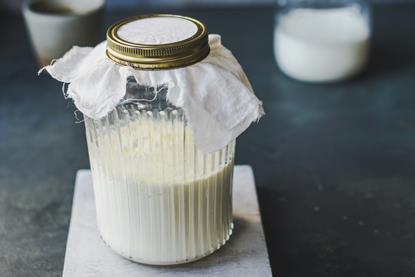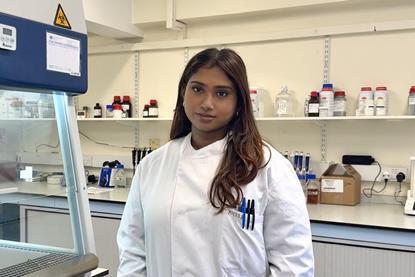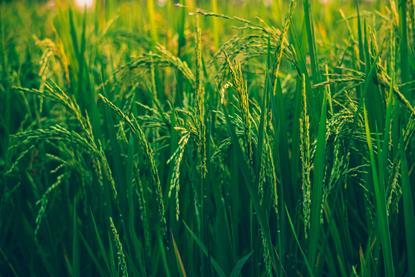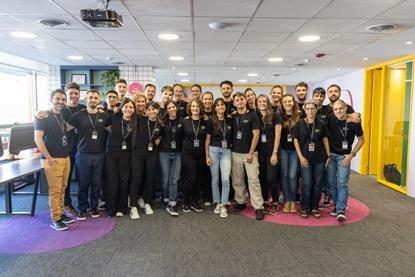Food security
Millions of people are undernourished globally and with the population growing, food security is a major concern. Food security is multifaceted, requiring advancements in food safety, ensuring products have a good shelf life, reducing spoilage and providing dietary additions to improve the nutrient intake of the population. The application of microbiology is far reaching, and new approaches are required to maintain food security. Through an improved understanding of plant-microbe interactions, it is possible to forecast and mitigate food shortages.
News
New study uncovers how rice viruses manipulate plant defenses to protect insect vectors
Rather than passively “hitchhiking” within insect vectors, rice viruses actively manipulate plant defense pathways to protect their insect carriers.
Read story- News
Rice genes matter more than domestication in shaping plant microbiomes
A new study reveals that the specific genetic identity of a rice plant plays a stronger role than whether it is wild or domesticated in determining which microbes it hosts and how those microbes function.
- News
CFA publishes timely new industry-led UK Ready to Eat Foods Safety and Shelf Life Guidance
New industry-led good practice guidance for manufacturers and retailers of certain ready to eat (RTE) foods will be published on 12 January 2026 to help Food Business Operators (FBOs), Competent Authorities (CAs) and enforcement officers manage the risk posed by Listeria monocytogenes in those products.
- News
How a fungus leads to tissue growths in maize
When a maize plant is attacked by the fungus Ustilago maydis, tumor-like tissue growths occur at the site of infection. How the pathogen causes this response in its host has long been unknown. But a study has now shown how the fungus takes over the plant’s function for forming lateral roots.
More food security
News
Flour choice shapes sourdough microbial communities
Researchers analyzed sourdough starters to understand how the type of flour shaped the microbial community. They found that strains in the genus Kazachstania, a common sourdough yeast, to be most abundant in all the starters, but the bacterial composition varied by flour varieties.
- News
Fifteen-year cattle manure application reshapes phoD- and gcd-harboring microbiomes, enhancing vegetable yields
A new study demonstrates that combined manure and chemical fertilizer (M+CF) in an open-field lettuce cropping system enhanced both diversity (+45.3%) and abundance (+290%) of gcd-harboring bacteria.
- News
Turning crop waste into precision weapons against waterborne pathogens
Researchers have developed a novel class of biomass-derived carbon dots that selectively eradicate Staphylococcus aureus in water, using corn straw to synthesize amine-modified nanomaterials that act as oxidase mimics, enabling targeted bacterial inactivation without harming beneficial microorganisms.
- News
Feeding plant remnants to fungi produces tasty protein to fortify vegan, vegetarian diets
Researchers fed the side streams of carrot production to fungi, generating a sustainable source of protein. They incorporated the new protein into proof-of-concept vegan patties and sausages that testers ranked as tastier than food made from plant-based proteins.
- Careers
Scientific Event Travel Grant: how the Safepork conference surpassed my expectations
Shan Goh from the University of Hertfordshire reports back on the International Symposium on the Epidemiology and Control of Biological, Chemical and Physical Hazards in Pigs and Pork held in Rennes, France, in October. Shan was supported with a Scientific Event Travel Grant awarded by AMI.
- News
Can certain bacteria regulate aging of the immune system and its related alterations?
Researchers have discovered a strain of Lentilactobacillus capable of preventing and even reversing aging-related immune alterations. Feeding aged mice with heat-inactivated YRC2606 resulted in lowered levels of inflammatory cytokines and signaling proteins.
- Careers
CBCTA 2024 oral presentation winners: Isabella and Lia take home the honours
Letters in Applied Microbiology sponsored the best oral presentation award at the 29th Brazilian Congress of Food Science and Technology (CBCTA 2024). Winner Isabella Bassoto Xavier and runner-up Lia Mariano Aquino take a dive into their research.
- Careers
Summer studentship: Harini searches South Asian fermented foods for microbes that can tackle fruit browning
Harini Satkunarasa reports back on her AMI-sponsored summer studentship which explored South Asian fermented foods as a source of microorganisms for tyrosinase inhibition, with the wider aim of finding natural ways to decrease fruit browning in foods.
- News
Scientists create microneedle system to deliver living biofertiliser directly into plants, boosting growth with less waste
A dissolving patch delivers beneficial microbes into leaves and stems, speeding growth in vegetables while using over 15 per cent less biofertiliser than soil application.
- News
Rice resists change: Study reveals viral tools for probing gene function fall short
Researchers tested two popular viral vectors - barley stripe mosaic virus (BSMV) and foxtail mosaic virus (FoMV) - to see if they could temporarily switch genes on or off in rice (Oryza sativa). They found no evidence that these virus-enabled reverse genetics (VERG) techniques work in rice.
- News
Receptors in mammary glands make livestock and humans inviting hosts for avian flu
A new study shows that the mammary glands of several other production animals besides cows – including pigs, sheep, goats, beef cattle and alpacas – are biologically suitable to harbor avian influenza, due to high levels of sialic acids.
- News
Postharvest apple immunity: a key factor in shelf life and fruit quality
New research sheds light on how the immune system of apple fruits interacts with their microbiomes during storage, playing a crucial role in maintaining fruit health and preventing spoilage.
- News
Previously unrecognized pathway in plants and phytoplankton offers mercury-detox powers
Primary producers—including phytoplankton—possess a previously overlooked ability to internally break down and detoxify methylmercury. The demethylation pathway rapidly converts methylmercury into less toxic inorganic mercury, which is subsequently reduced to gaseous Hg⁰.
- Careers
The Future is Fungi 2025: award-winner Michroma’s mission to harness fungi for clean food dyes and flavors
Winner of The Future is Fungi Award 2025, US and Argentina-based foodtech startup Michroma is replacing petrochemical coloring with fungibased natural ingredients, launching one of the world’s leading sustainable platforms for food flavors and colors. Here’s its story.
- News
Biochar boosts hydrogen and methane yield in next-generation food-waste-to-energy systems
A research team has demonstrated that adding biochar to two-phase anaerobic digestion systems can significantly increase hydrogen and methane production from food waste, while maintaining system stability under high organic loading rates.
- News
Pathogens are the biggest threats at festivals and mass gatherings
A comprehensive review led by public health experts reveals that infectious disease outbreaks and foodborne illnesses are the most common public health threats at youth-focused mass gatherings, ranging from music festivals and cultural celebrations to sporting and religious gatherings.
- News
Microalgae could play key role in bio-based circular economy
With food systems under pressure from climate change, geopolitical instability, and supply chain vulnerabilities, the EU is driving innovation toward more sustainable, resilient, and local production models. Microalgae have emerged as a promising resource for producing ingredients across food, feed, and other consumer goods.
- News
Plant extracts show promise in reducing human pathogen risks in agricultural soils
A new study has revealed that natural plant extracts can significantly lower the risks posed by human bacterial pathogens in manure amended agricultural soils. The eco friendly strategy disrupts the communication systems that bacteria use to coordinate harmful activities.
- News
Can a synthetic compound help plants recruit beneficial bacteria?
Researchers examining how a DMA analog called proline-2’-deoxymugineic acid (PDMA) influences the rhizosphere microbiome of peanut plants found that PDMA increased the abundance of beneficial microbes, particularly those within the phylum Actinobacteria.




